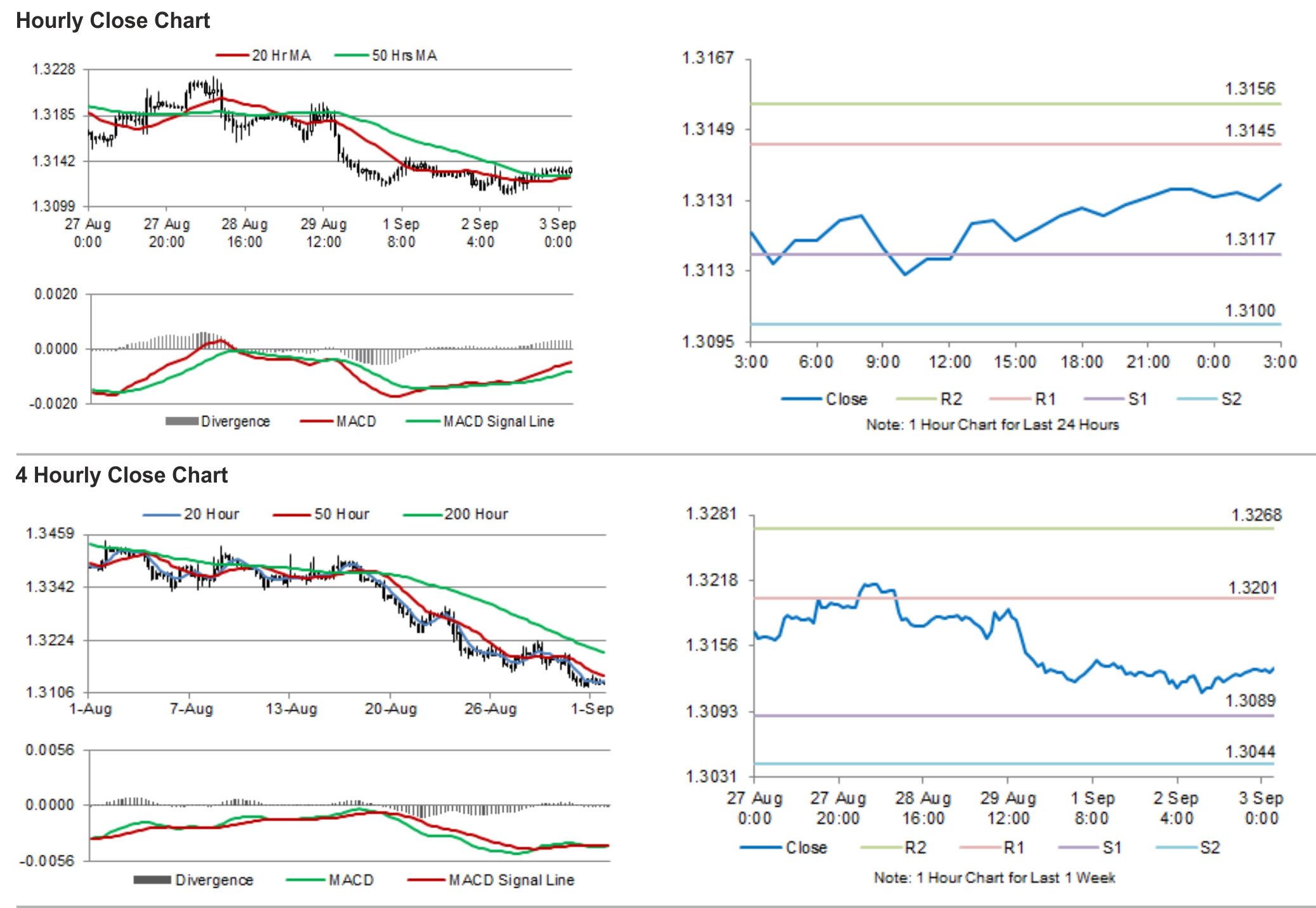For the 24 hours to 23:00 GMT, the EUR traded marginally higher against the USD and closed at 1.3134.
In economic news, the PPI in the Euro-zone eased 0.1% in July, compared to a rise of 0.1% in the previous month. Elsewhere, In Spain, the number of unemployed people registered a rise of 8.1K in August, following a 29.8K decline in the prior month but lower than market expectations of an increase of 25.5K.
In the US, the manufacturing activity expanded in August at the fastest rate since March 2011. The ISM manufacturing PMI in the US jumped to 59.0 in August, against market expectations for a reading of 57.0, and previous month’s 57.1. Additionally, the US construction spending rebounded more than expected, increasing 1.8% on a monthly basis in July, registering its biggest gain in more than 2 years, after falling by 0.9% in the previous month. Analysts had expected spending to increase by 1.0%. Meanwhile, the US Markit PMI rose to 57.9 in August, from 58.0 in July, marking its highest level since April 2010. On the other hand, the ISM prices paid index dropped to 58.0 in August, against market expectations of 58.8, following a level of 59.5 in July. Also, the IBD/TIPP economic optimism fell to 45.2 in August, against market expectations for a reading of 45.5 and compared to 44.5 recorded in the previous month.
In the Asian session, at GMT0300, the pair is trading at 1.3135, with the EUR trading tad higher from yesterday’s close.
The pair is expected to find support at 1.3117, and a fall through could take it to the next support level of 1.31. The pair is expected to find its first resistance at 1.3145, and a rise through could take it to the next resistance level of 1.3156.
Trading trends in the Euro today are expected to be determined by services PMI data from the Euro-zone and its various peripheries as well as Euro-zone’s retail sales data, set for release in a few hours.
The currency pair is showing convergence with its 20 Hr and 50 Hr moving averages.

